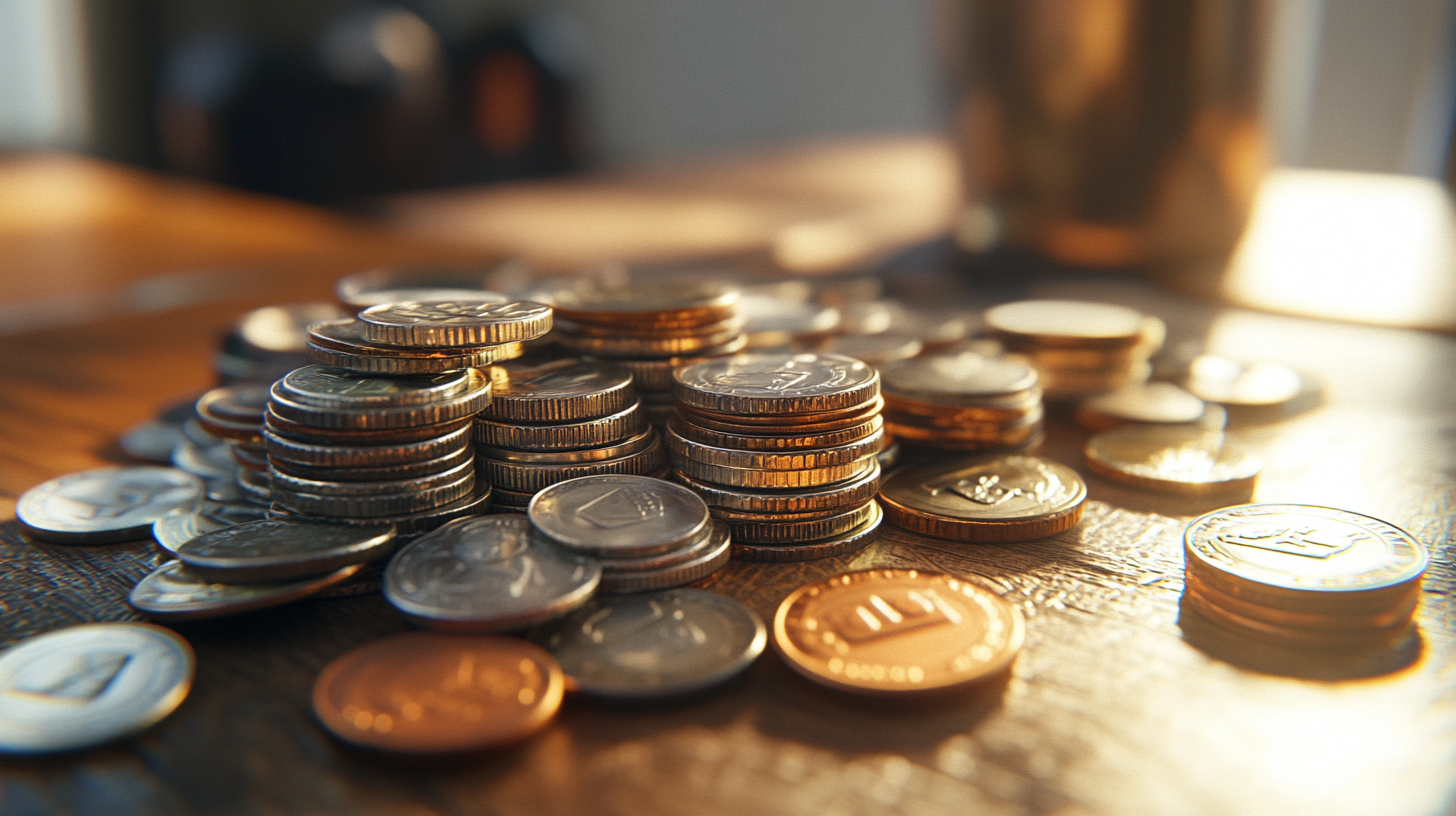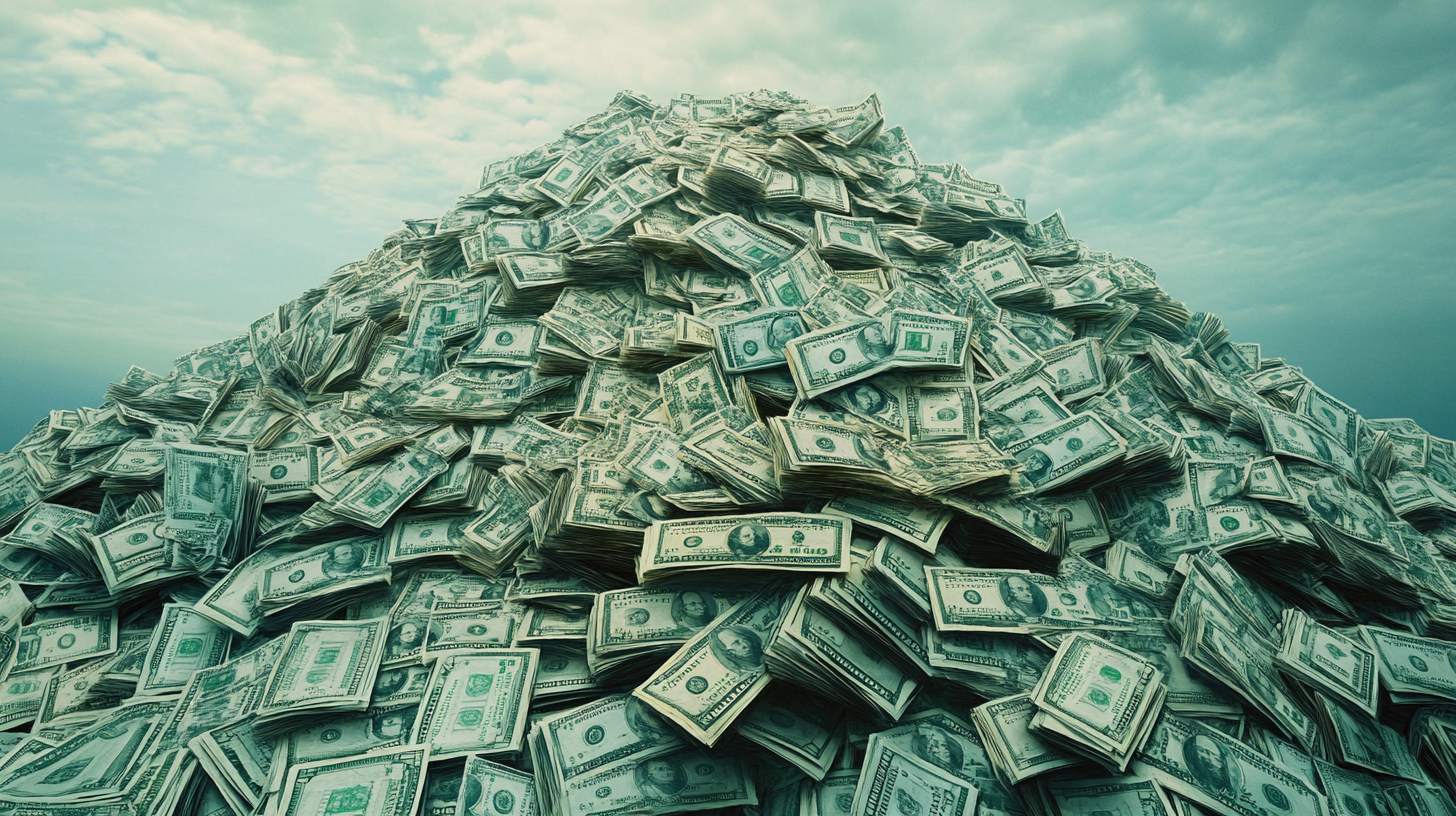This article was written by our expert who is surveying the industry and constantly updating the business plan for a pet grooming salon.
Starting a pet grooming salon requires careful planning and a substantial equipment investment to ensure professional service quality.
The equipment budget for a professional pet grooming salon typically ranges from $15,000 to $50,000 for initial setup, depending on whether you choose entry-level or commercial-grade equipment. This investment covers everything from basic grooming tools to hydraulic tables, industrial dryers, and sanitization equipment required for safe operations.
If you want to dig deeper and learn more, you can download our business plan for a pet grooming salon. Also, before launching, get all the profit, revenue, and cost breakdowns you need for complete clarity with our pet grooming salon financial forecast.
Professional pet grooming salons require a comprehensive equipment investment ranging from $15,000 to $50,000 for initial setup.
Commercial-grade equipment costs 2-5 times more than entry-level but provides superior durability and performance for professional operations.
| Equipment Category | Entry-Level Cost | Commercial Grade | Lifespan | Annual Maintenance |
|---|---|---|---|---|
| Professional Clippers & Blades | $160-$350 | $420-$750 | 3-8 years | $120-$200 |
| Hydraulic Grooming Table | $200-$350 | $800-$2,500 | 8-15 years | $100-$300 |
| Professional Dryers | $200-$400 | $800-$2,000 | 8-15 years | $150-$400 |
| Bathing Tub System | $250-$500 | $800-$2,000 | 8-15 years | $100-$250 |
| Scissors & Hand Tools | $140-$330 | $620-$1,200 | 3-8 years | $200-$400 |
| Safety & Sanitation | $200-$300 | $400-$700 | 5-10 years | $200-$300 |
| Restraints & Cages | $150-$300 | $400-$1,000 | 8-15 years | $50-$150 |

What is the complete list of essential grooming equipment required to operate a professional pet grooming salon?
A professional pet grooming salon requires 15 essential equipment categories to deliver complete grooming services safely and efficiently.
- Cutting Tools: Professional clippers (corded and cordless), clipper blade sets with various sizes, comb attachments for different coat lengths
- Scissors Set: Straight scissors for general cutting, curved scissors for shaping, thinning shears for blending
- Brushing Equipment: Pin brushes for long coats, slicker brushes for removing mats, bristle brushes for finishing
- Combs: Fine-tooth combs for detail work, coarse combs for initial brushing, flea combs for parasite detection
- Nail Care: Nail clippers for small and large dogs, nail grinders for smooth finishing, styptic powder for accidents
- Specialized Tools: De-matting tools for tangled coats, de-shedding tools for undercoat removal
- Work Surface: Hydraulic grooming table with adjustable height, non-slip surface, grooming arm with noose
- Drying System: High-velocity blaster dryers for thick coats, finishing dryers for final styling
- Bathing Station: Stainless steel or fiberglass tub, handheld sprayer, temperature control system
- Sanitization: UV sterilizer for tools, disinfectant solutions, cleaning supplies
- Restraint Equipment: Grooming nooses, muzzles for safety, leads for control
- Storage: Holding cages or crates for before and after grooming
- Safety Equipment: First aid kit, protective gloves, aprons, eye protection
This complete equipment list ensures your pet grooming salon can handle all breeds and coat types while maintaining professional safety standards.
What are the average purchase costs for each of these equipment items in today's market?
Equipment costs vary significantly between entry-level and commercial-grade options, with professional-grade equipment typically costing 2-5 times more than basic models.
| Equipment Item | Entry-Level Price | Commercial Grade | Price Difference |
|---|---|---|---|
| Professional Clippers | $100-$250 | $300-$500 | 3x higher |
| Clipper Blade Set (complete) | $60-$100 | $120-$250 | 2.5x higher |
| Grooming Scissors (3-piece set) | $100-$250 | $500-$1,000 | 4x higher |
| Brush & Comb Variety Pack | $40-$80 | $120-$200 | 2.5x higher |
| Nail Clippers & Grinders | $25-$50 | $75-$150 | 3x higher |
| Hydraulic Grooming Table | $200-$350 | $800-$2,500 | 7x higher |
| Professional Dryer System | $200-$400 | $800-$2,000 | 5x higher |
| Bathing Tub with Fixtures | $250-$500 | $800-$2,000 | 4x higher |
| Tool Sterilizer | $80-$120 | $300-$500 | 4x higher |
| Restraints & Cages (each) | $50-$100 | $200-$500 | 5x higher |
The total initial investment ranges from $1,105-$2,050 for entry-level equipment to $4,015-$8,600 for commercial-grade equipment per workstation. Most professional salons require 2-4 complete workstations, bringing total costs to $8,000-$35,000 for equipment alone.
What are the expected ongoing maintenance and replacement costs for these items per year?
Annual maintenance costs for pet grooming salon equipment typically range from $800 to $2,500 per workstation, depending on usage volume and equipment quality.
Tool maintenance represents the largest ongoing expense, with scissor sharpening costing $15-$25 per pair every 3-4 months and clipper blade sharpening averaging $120-$400 annually depending on usage frequency. Professional scissors require replacement every 3-8 years, with high-quality sets lasting longer under proper care.
Mechanical equipment like tables, dryers, and tubs require annual servicing costing $400-$1,200 combined, including hydraulic fluid changes, motor maintenance, and seal replacements. Small consumable tools like brushes, combs, and restraints need replacement annually, costing $100-$300 per workstation.
Sanitation supplies represent an ongoing monthly expense of $50-$100, including disinfectants, sterilization solutions, and cleaning materials required for health compliance. Emergency repairs can add unexpected costs of $200-$800 annually for equipment breakdowns.
Which equipment items require the highest initial investment, and why?
Hydraulic grooming tables, professional dryer systems, and bathing tubs represent the three highest equipment investments due to their specialized engineering and durability requirements.
Hydraulic grooming tables cost $800-$2,500 because they contain precision hydraulic systems, heavy-duty steel construction, and adjustable height mechanisms that must support dogs weighing up to 200 pounds while providing smooth operation for 8-12 hours daily. The table surface requires non-slip coating and integrated grooming arm systems.
Professional dryer systems range from $800-$2,000 because they feature powerful motors (1-3 HP), variable speed controls, and specialized nozzles designed to safely dry different coat types without overheating. Commercial dryers must operate continuously without overheating and include noise reduction features.
Bathing tub systems cost $800-$2,000 due to stainless steel or reinforced fiberglass construction, integrated plumbing systems, adjustable-height features, and specialized faucets with temperature control. Professional tubs include ramps, restraint systems, and drainage designed for high-volume daily use.
These three items account for 60-70% of initial equipment investment but provide the foundation for efficient, professional grooming operations that justify their cost through increased productivity and service quality.
What are the standard lifespans of the main equipment pieces, assuming regular use and upkeep?
Equipment lifespan varies significantly based on construction quality, with commercial-grade equipment lasting 2-3 times longer than entry-level alternatives.
| Equipment Category | Entry-Level Lifespan | Commercial Grade | Factors Affecting Longevity |
|---|---|---|---|
| Clippers & Scissors | 3-5 years | 6-8 years | Daily cleaning, proper storage, regular sharpening |
| Grooming Tables | 8-10 years | 12-15 years | Hydraulic maintenance, weight limits respected |
| Professional Dryers | 8-12 years | 12-15 years | Filter cleaning, motor maintenance, proper ventilation |
| Bathing Tubs | 10-12 years | 15+ years | Material quality, plumbing maintenance, chemical resistance |
| Hand Tools (brushes/combs) | 1-2 years | 2-3 years | Cleaning frequency, storage conditions, usage intensity |
| Sterilization Equipment | 5-7 years | 8-10 years | Regular bulb replacement, proper cleaning, electrical maintenance |
| Restraint Systems | 3-5 years | 8-12 years | Material quality, stress distribution, regular inspection |
Proper maintenance can extend equipment life by 20-40%, making regular servicing a cost-effective investment for pet grooming salon owners.
What are the cost differences between commercial-grade and entry-level equipment, and which is recommended for long-term operations?
Commercial-grade equipment costs 2-5 times more initially but provides 40-60% lower total cost of ownership over 10 years through extended lifespan and reduced downtime.
Entry-level equipment appears cost-effective with initial investments of $8,000-$15,000 per workstation, but replacement cycles every 3-5 years create higher long-term costs. Commercial equipment requires $20,000-$35,000 initially but lasts 8-15 years with proper maintenance.
Commercial-grade clippers ($300-$500) feature precision motors, replaceable parts, and consistent performance under heavy use, while entry-level models ($100-$250) may overheat, lose power, or break during busy periods. Professional downtime costs $200-$500 per day in lost revenue.
For serious pet grooming salon operations, commercial-grade equipment is strongly recommended because it ensures consistent service quality, reduces customer wait times, and maintains professional reputation. The higher initial investment pays for itself through reliability, reduced maintenance costs, and extended service life.
You'll find detailed market insights in our pet grooming salon business plan, updated every quarter.
What financing or leasing options are available for high-cost equipment, and what are their typical terms?
Equipment financing options include traditional loans, lease-to-own programs, and manufacturer financing with terms ranging from 2-5 years and APRs between 6-11%.
Equipment leasing requires 10-20% down payment with monthly payments spread over 24-60 months, allowing immediate access to commercial-grade equipment without large upfront investment. Lease-to-own programs typically cost 15-25% more than cash purchases but preserve working capital for salon operations.
Manufacturer financing through companies like Andis, Wahl, and PetEdge often provides promotional 0% APR for 6-12 months for qualified buyers, followed by standard rates of 8-12%. Equipment suppliers frequently offer seasonal promotions with extended payment terms during slow business periods.
Traditional bank equipment loans require 15-25% down payment with 5-7 year terms at current commercial rates (7-10% APR). SBA loans may provide lower rates (5-8% APR) but require more extensive documentation and longer approval processes.
Most financing options include maintenance packages and extended warranties, reducing unexpected repair costs during the payment period while ensuring equipment remains operational.
How much budget should be allocated for safety and sanitation equipment to comply with industry regulations?
Safety and sanitation compliance requires an initial investment of $400-$1,000 plus $200-$400 annually for ongoing supplies and equipment replacement.
Basic safety equipment includes first aid kits ($50-$100), protective gloves ($30-$50 annually), waterproof aprons ($40-$80), and eye protection ($20-$40). Professional-grade safety equipment costs double but provides better protection and durability for daily use.
Sanitation equipment requires UV sterilizers ($80-$500), disinfectant solutions ($100-$200 annually), and specialized cleaning tools ($50-$150). State regulations vary, but most require visible sanitization stations, proper chemical storage, and documented cleaning procedures.
Emergency equipment includes animal restraint tools ($100-$300), bite prevention muzzles ($50-$150), and emergency contact systems. Professional liability insurance may require specific safety equipment to maintain coverage.
Health department compliance may require additional investments in ventilation systems ($500-$2,000), non-slip flooring ($1,000-$5,000), and proper drainage systems. Initial consultation with local health officials helps identify specific requirements and avoid costly retrofitting.
What are the typical costs of specialized grooming tools for different pet sizes and coat types?
Specialized grooming tools add $1,000-$3,000 to initial equipment costs, depending on the variety of breeds and coat types your salon services.
Large breed tools cost significantly more due to heavy-duty construction requirements, with extra-large clipper blades ($40-$80 each), oversized scissors ($150-$400), and reinforced tables ($1,200-$2,500) capable of supporting dogs over 100 pounds safely.
Double-coat breeds require specialized de-shedding tools ($60-$200), undercoat rakes ($40-$120), and high-velocity dryers ($800-$1,500) to properly remove seasonal shedding without damaging the topcoat. Curly-coated breeds need specialized scissors ($200-$600) and texture-specific brushes ($50-$150).
Small breed tools include precision scissors ($100-$300), fine-tooth combs ($20-$60), and adjustable restraints ($40-$120) designed for delicate handling. Toy breeds require specialized nail clippers ($30-$80) and gentle brushes ($25-$75) to prevent injury during grooming.
Coat-specific brushes range from $30-$150 each, with slicker brushes for matted coats, pin brushes for long-haired breeds, and bristle brushes for smooth coats. Professional salons typically maintain 15-20 specialized brushes to handle all coat types effectively.
How much should be budgeted for energy and water consumption directly linked to running the equipment?
Utility costs directly related to grooming equipment range from $500-$2,000 annually per workstation, depending on local rates and usage intensity.
High-velocity dryers consume 1,500-3,000 watts during operation, adding $200-$600 annually to electricity costs based on 6-8 hours daily use. Hydraulic table pumps and lighting systems add another $150-$300 annually per workstation.
Water consumption varies dramatically by salon size, with bathing systems using 15-30 gallons per large dog and 5-10 gallons per small dog. Average salons processing 20-40 dogs daily consume 300-800 gallons, costing $150-$500 monthly depending on local water rates.
Hot water heating represents the largest utility expense, with commercial water heaters consuming $100-$400 monthly in natural gas or electricity to maintain 100-110°F water temperatures required for effective cleaning and sanitization.
Energy-efficient equipment reduces consumption by 20-30%, with LED lighting ($50-$150 annually), variable-speed dryers, and insulated water heaters providing measurable savings. Installing programmable thermostats and timers can reduce utility costs by an additional 10-15%.
What are the most cost-effective suppliers or distributors currently used by established grooming salons?
Established pet grooming salons consistently recommend five primary suppliers for competitive pricing and reliable service: PetEdge, Christies Direct, Ryan's Pet Supplies, Groomer's Choice, and Direct Pet Supply.
- PetEdge: Largest selection with bulk discounts up to 25% for orders over $500, free shipping on orders over $99, and frequent promotional sales on major brands
- Christies Direct: Competitive pricing on European scissors and specialized tools, with professional groomer discounts averaging 15-20% off retail prices
- Ryan's Pet Supplies: Strong relationships with Andis, Wahl, and Oster, offering manufacturer rebates and extended warranties on professional equipment
- Groomer's Choice: Specializes in high-end Japanese scissors and German clippers, with trade-in programs and financing options for expensive tools
- Direct Pet Supply: Regional distributor with local delivery options, reducing shipping costs and providing same-day emergency equipment replacement
Many successful salons maintain accounts with 2-3 suppliers to compare prices and ensure backup availability during equipment failures. Professional associations like National Dog Groomers Association provide member discounts with preferred suppliers, typically saving 10-15% on annual equipment purchases.
How much contingency should be added to the equipment budget to account for unexpected repairs or upgrades in the first year?
Add 15-25% contingency to your initial equipment budget, representing $2,500-$8,000 for most professional pet grooming salon setups.
First-year equipment issues are common as new business owners learn proper maintenance procedures and discover unexpected needs based on actual customer demand. Hydraulic tables may require seal replacements ($200-$500), dryers often need filter upgrades ($100-$300), and scissors require more frequent sharpening ($150-$400) during initial learning phases.
Unexpected upgrades frequently arise when initial equipment proves insufficient for actual business volume, requiring additional workstations ($5,000-$15,000), larger capacity dryers ($800-$2,000), or specialized tools for breed-specific services ($500-$1,500).
Insurance deductibles for equipment damage typically range from $500-$2,500, and some policies exclude certain types of wear-related failures. Emergency equipment rental during repairs costs $100-$300 daily, making contingency funds essential for maintaining business continuity.
This is one of the strategies explained in our pet grooming salon business plan.
Conclusion
This article is for informational purposes only and should not be considered financial advice. Readers are encouraged to consult with a qualified professional before making any investment decisions. We accept no liability for any actions taken based on the information provided.
Planning your pet grooming salon equipment budget requires careful consideration of both initial costs and long-term operational expenses.
We cover this exact topic in the pet grooming salon business plan, providing detailed financial projections and equipment recommendations based on current market data.
Sources
- JKL Grooming - Dog Grooming Tools
- ZekiPet - Must-Have Dog Grooming Tools 2025
- GroomArts - Equipment Costs
- Business Plan Templates - Canine Grooming Costs
- TransGroom - Essential Grooming Tools
- CPD Online - Setting Up Dog Grooming Business
- PetEdge - Dog Grooming Equipment
- PetExec - Mobile Dog Grooming Start-up Costs
- Christies Direct
- QC Pet Studies - Dog Grooming Business Costs







